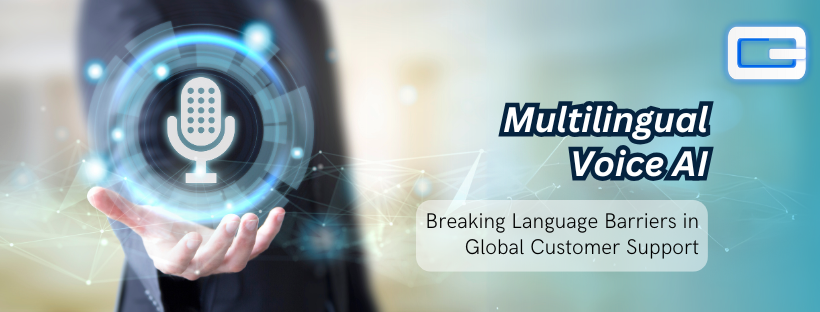A world that is more connected than ever before should not allow language to be a barrier to excellent customer service. As businesses expand globally, the need for multilingual support becomes critical. However hiring human agents fluent in every language is costly and difficult to scale. That’s where Multilingual Voice AI steps in, revolutionizing customer support by offering real-time, intelligent, and scalable communication across languages.
What is Multilingual Voice AI?
Voice AI refers to voice-based artificial intelligence systems that can understand, process, and respond to a variety of languages at the same time. These systems combine natural language processing (NLP), speech recognition, and machine learning to handle customer queries with human-like fluency.
Unlike traditional IVR systems or text-only chatbots, voice AI enables spoken, real-time conversations, providing a more natural and engaging customer experience.
Why It Matters for Global Support
Customer expectations have evolved. They expect fast, round-the-clock service in their preferred language. Failing to meet this expectation can lead to frustration, poor reviews, and lost business.
According to CSA Research, 76% of consumers are more likely to buy again from the same brand if customer care is provided in their native language. Multilingual Voice AI bridges that gap by offering personalized support at scale, without the cost of hiring language-specific teams.
How It Works in the Real World
1. Microsoft Azure Cognitive Services:
Microsoft provides voice AI APIs that allow businesses to add multilingual support to their applications. For example, an e-commerce company can use Azure’s speech-to-text and text-to-speech services to handle customer queries in English, Spanish, Mandarin, and over 70 other languages.
2. Air India & Skit.ai:
India’s national carrier, Air India, deployed Skit.ai’s voice automation platform to handle inbound customer queries in multiple Indian languages and English. This helped reduce wait times and improved customer satisfaction, especially among domestic travelers less comfortable with English.
3. IKEA’s Global Helpdesk:
IKEA uses voice AI solutions that can switch languages depending on the customer’s location or preference. Whether it’s a customer from France asking about return policies or someone in Japan confirming a delivery date, the AI handles the query seamlessly.
Key Benefits
- 24/7 Availability: Voice AI never sleeps. It can respond to customers across time zones, without delay.
- Cost-Efficiency: Reduces the need to hire multilingual agents in every region.
- Consistency: AI provides standardized responses, ensuring compliance and accuracy.
- Scalability: Easily adds support for new languages without major infrastructure changes.
Challenges and the Road Ahead
While Multilingual Voice AI is powerful, challenges remain, such as handling regional dialects, slang, or emotional tone. However, continuous advancements in deep learning and language models (like Whisper from OpenAI or Google’s Gemini) are addressing these issues.
As AI becomes more human-like, we’re getting closer to true global customer service, one that listens, understands, and responds regardless of language.
Conclusion
Multilingual Voice AI is not just a tech trend—it’s a business necessity in today’s global economy. It empowers companies to connect authentically with customers across the world, offering support that’s not just fast, but also fluent.
By adopting multilingual voice AI, businesses aren’t just improving service—they’re building bridges across borders.




